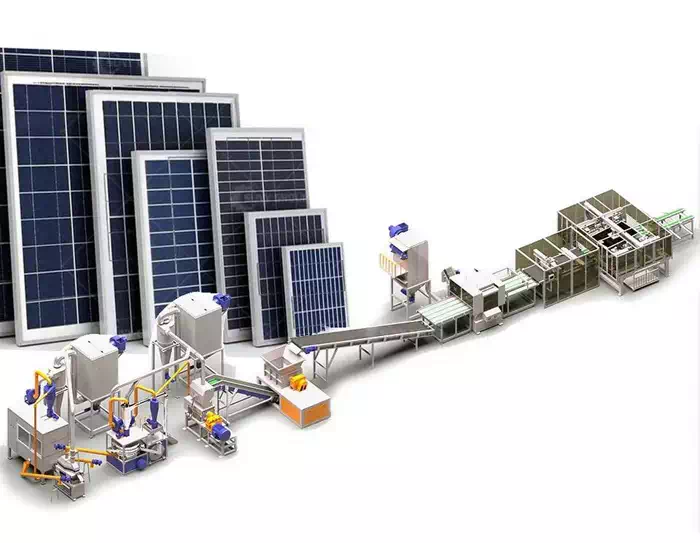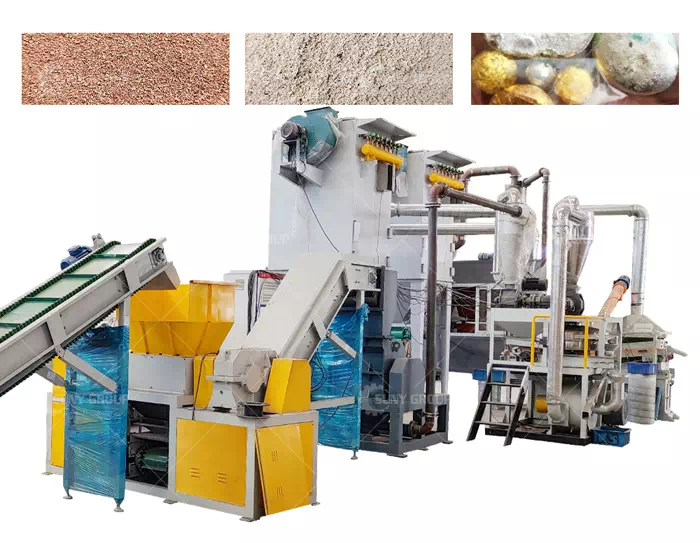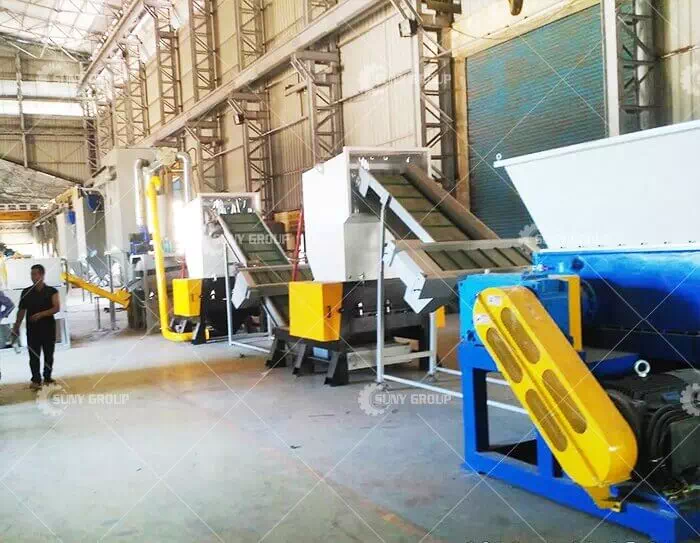Soda Can Aluminum Recycling Line
The environmental benefits of aluminum can recycling are significant. However, technical bottlenecks still exist in the recycling process, especially in dealing with paint, impurities, and oxidized layers on the surface of aluminum cans. The surface of aluminum cans is usually coated with paint, there are impurities contamination, and after a long time of exposure, the surface may appear oxidation, resulting in increased difficulty in recycling and processing. How to effectively remove these interfering factors is the current aluminum can recycling technology urgently needed to solve the problem.
Aluminum cans recycling process
The recycling of aluminum cans usually undergoes several important steps: collection, compression, crushing, and so on. First of all, aluminum cans are collected and compressed to reduce their volume for subsequent transportation and processing. Next, the aluminum cans are crushed by a crusher to form a size suitable for the furnace, which is convenient for subsequent smelting and carbonization. However, paint, dirt, and other impurities attached to the surface of aluminum cans often become a non-negligible problem in the recycling process. To ensure the quality of recycled aluminum, pretreatment of aluminum cans for impurities is required. Common treatment methods include magnetic separation and screening for removing ferrous materials and other impurities from aluminum cans that do not readily fuse with aluminum.
Critical Steps in Paint Removal and Charring
Paint removal and carbonization are key steps in aluminum can recycling. If the paint on the surface of aluminum cans is not removed, it will affect the purity and recycling efficiency of the aluminum. Paint is usually removed by high temperature charring and the process is carried out in a continuous charring oven. Continuous charring ovens are highly efficient at charring paint and other organic matter from aluminum cans into a gas and expelling it, while maintaining the stability of the aluminum. The temperature and airflow control of the charcoal furnace is critical in this process, as too high or too low a temperature can affect the quality and recovery of the aluminum. Therefore, the introduction of a continuous carbonization furnace not only improves the efficiency of aluminum can recycling, but also greatly reduces energy consumption, which is an effective way to solve the problem of paint and other impurities in the aluminum can recycling process.
To ensure the high efficiency and environmental protection of aluminum can recycling treatment, the related supporting equipment is crucial. First, the crusher is the basic equipment, responsible for crushing aluminum cans into the right size for subsequent processing. Secondly, the loading and conveying system needs to have an automated function to automatically feed the crushed aluminum cans into the carbonization furnace. The carbonized aluminum needs to pass through the cooling and sorting system for temperature reduction to a suitable range and separation of aluminum and other wastes. In addition, the exhaust gas treatment system should not be neglected. The gas emission from the carbonization process needs to be purified to avoid polluting the environment. With the advancement of technology, intelligent and modular processing lines are gradually becoming the future trend of aluminum can recycling. By introducing advanced sensors and automated control systems, SUNY GROUP not only enhances the recycling efficiency but also greatly reduces the labor cost and improves the flexibility and adaptability of the overall production line.
Recommend products
CONTACT US:
If you have any requirement or suggestion, please fill in the form and send to us, thanks!E-mail:sunymachine@gmail.com | Whatsapp:+8613674945231








